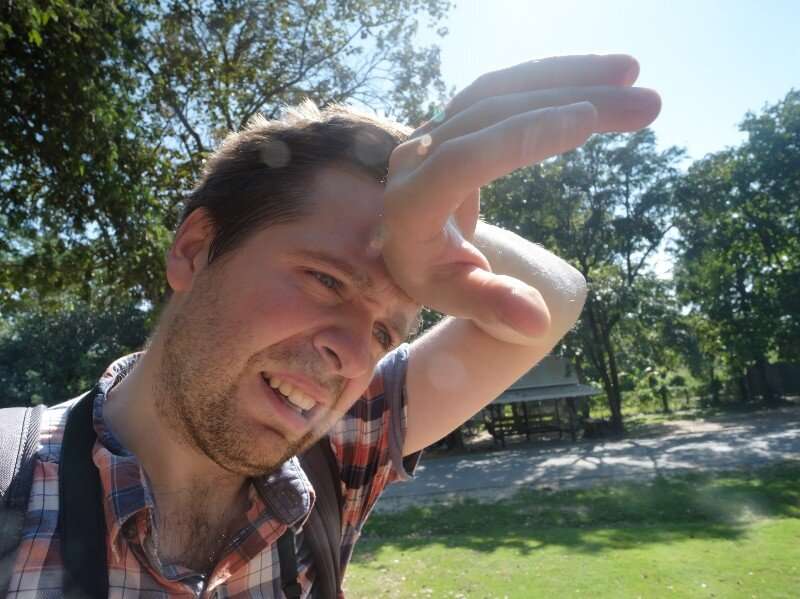This article has been reviewed according to Science X's editorial process and policies. Editors have highlighted the following attributes while ensuring the content's credibility:
fact-checked
reputable news agency
proofread
Gardeners, landscapers: Watch out for these high heat danger signs

Climate change is pushing daytime summer temperatures higher for longer periods of time, and that can spell real danger for folks who work outside, like gardeners and landscapers.
Protecting yourself in the heat and knowing the warning signs of heat-related illness is crucial, said Chris Enroth, horticulture educator at University of Illinois Extension.
He should know: It happened to him.
"When I was working as a landscaper, we had to sod a large backyard during a day when the temperature was over 100 degrees Fahrenheit," Enroth said.
"We were hustling to get the sod down quickly, so it didn't burn up in the hot sun. About midway through the day, I started feeling nauseated and dizzy, and I stopped sweating. I was disoriented and could no longer push my wheelbarrow," he added. "That's when I knew I was suffering from severe heat exhaustion, perhaps even heat stroke."
Heat exhaustion and heat stroke occur when the body can no longer maintain its normal temperature. Work exacerbates the problem, since working muscles generate their own heat, Enroth explained.
Here are the symptoms of heat exhaustion to look out for:
- Increased body temperature, above 100 degrees Fahrenheit (F)
- Cool, moist, clammy skin
- Weakness and muscle cramps
- Headache
- Dizziness, nausea or vomiting
- Fainting
If you or someone near you is experiencing at least some of these symptoms, get them to a cool place, preferably with good air movement, Enroth said. Have them lie down with their legs elevated. Get the person to drink cold water and apply cold packs and/or wet towels to their body to help them cool. If there's no positive change within 30 minutes, call for medical attention.
Even more of an emergency than heat exhaustion is heat stroke, because it can quickly lead to organ failure, coma and death. Here are the signs:
- High body temperature,106 degrees F or higher
- Hot, dry skin—not sweaty. Red, flushed appearance
- Rapid pulse and difficulty breathing
- Confusion, hallucinations or irrational behavior
- Agitation, convulsions or seizure
If you notice anyone with these symptoms, call 911 immediately.
Time is crucial, Enroth said, because, "from my experience, most people suffering from heat stroke may not be aware of their condition until it's too late."
While waiting for emergency personnel, get the afflicted person to a cool place and remove any excessive clothing. Have them lie down, with head and shoulders a bit elevated. Use any means available—cold packs, wet towels—applying these cooling items to the back of the neck, armpits and groin area.
If a cold shower or bath is available, help the person into the shower or bath to help them cool. However, keep track of their body temperature, because too much cooling can push the body into hypothermia.
Once the body reaches 102 degrees F, remove cooling agents and/or remove them from the cold shower or bath. Watch for possible seizures.
Preventing on-the-job heat emergencies
Some tips to making sure heat-related illness doesn't happen to you:
- According to Enroth, the human body needs to slowly acclimatize to the hot temperatures that can come during the transition from spring to summer. Landscapers and gardeners may want to gradually extend their periods of working outside during this transition time, and avoid overdoing it all at once.
- Schedule the heaviest work for the cooler hours—early morning or evening.
- Hydration is key, so make sure you drink plenty of water (water hydrates better than sports drinks) before an outside shift in hot weather.
- Avoid alcohol, drugs and medications that might exacerbate heat stress.
- Take 15-minute breaks every two hours, to help cool down.
More information: The American Red Cross has more on heat stroke.
© 2024 HealthDay. All rights reserved.





















